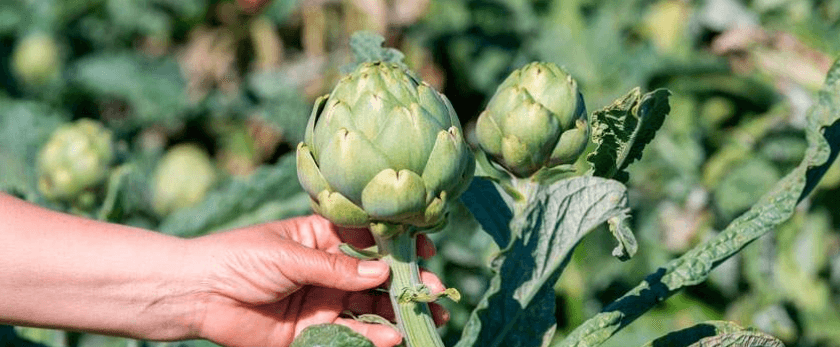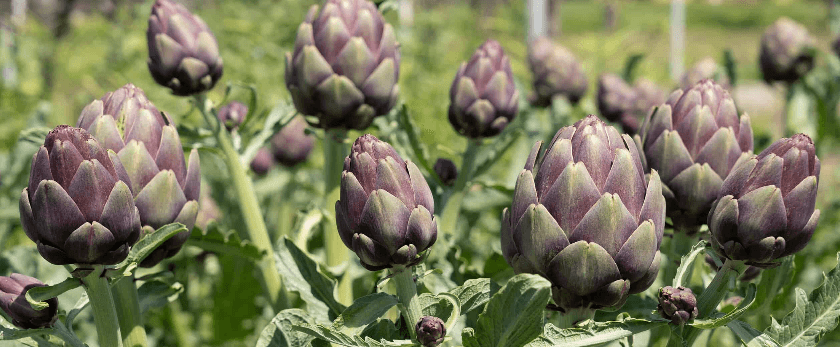Artichokes are not only a delicious addition to any meal, but they are also a beautiful and low-maintenance plant to grow in your garden. With their unique shape and vibrant green color, artichokes can add a touch of elegance to any landscape. Plus, they are packed with nutrients and antioxidants, making them a healthy choice for your diet. In this article, we will discuss how to grow artichokes and provide tips for caring for them to ensure a successful harvest.
What You Will Need
Before we dive into the steps for growing artichokes, let's first gather the necessary materials. Here's what you will need:
- Artichoke seeds or seedlings
- A sunny spot in your garden
- Well-draining soil
- Fertilizer
- Pruning shears
- Watering can or hose
Now that you have everything you need, let's get started on growing your own artichokes!

How to Care for Artichokes
Watering
Artichokes require consistent watering to thrive. They prefer moist, but not waterlogged, soil. It's important to water them deeply, at least once a week, to encourage deep root growth. However, be careful not to overwater as this can lead to root rot. To check if your artichokes need watering, stick your finger into the soil. If it feels dry, it's time to water.
Light
Artichokes need full sun to grow and produce healthy, flavorful buds. Make sure to plant them in a spot that receives at least 6-8 hours of sunlight per day. If you live in a hot climate, consider providing some afternoon shade to prevent the plants from getting too stressed.
Soil
Artichokes prefer well-draining soil with a pH level between 6.5-7.5. If your soil is too acidic, you can add lime to raise the pH level. If it's too alkaline, you can add sulfur to lower it. It's also a good idea to amend the soil with compost or aged manure before planting to provide the plants with essential nutrients.
Fertilizer
Artichokes are heavy feeders and require regular fertilization to produce healthy buds. You can use a balanced fertilizer, such as a 10-10-10, every 4-6 weeks during the growing season. Alternatively, you can use organic fertilizers, such as fish emulsion or compost tea, to provide the plants with nutrients.
Pruning
Pruning is an essential part of caring for artichokes. It helps to promote new growth and prevents the plants from becoming too large and unmanageable. In the first year, remove any small buds that form to allow the plant to focus on establishing a strong root system. In the second year, prune the plant down to the ground in late fall or early winter. This will encourage the plant to produce larger and more flavorful buds in the following year.
What is the Best Time to Grow Artichokes?
Artichokes are a cool-season crop and are best grown in the spring or fall. In warmer climates, they can also be grown in the winter. It's important to note that artichokes are perennials, meaning they will come back year after year. However, they are not cold-hardy and may not survive harsh winters. If you live in a colder climate, it's best to grow artichokes as annuals.
Common Problems with Artichokes
While artichokes are relatively easy to grow, they can still face some common problems. Here are a few to watch out for:
- Aphids: These small insects can suck the sap from the leaves and cause them to wilt. You can use insecticidal soap or neem oil to get rid of them.
- Slugs and snails: These pests can eat away at the leaves and buds of artichokes. You can use organic slug and snail bait or handpick them off the plants.
- Powdery mildew: This fungal disease can cause a white powdery coating on the leaves and stems of artichokes. To prevent it, make sure to provide good air circulation and avoid overhead watering.
- Frost damage: As mentioned earlier, artichokes are not cold-hardy and can be damaged by frost. If you live in a colder climate, it's best to grow them as annuals or protect them with a frost cloth during the winter.
In Conclusion
Growing artichokes can be a rewarding experience, both for your taste buds and your garden. With proper care and attention, you can enjoy a bountiful harvest of these delicious and nutritious vegetables. Remember to water consistently, provide enough sunlight, and fertilize regularly to ensure healthy growth. And don't forget to prune to keep your plants in check. Happy gardening!










